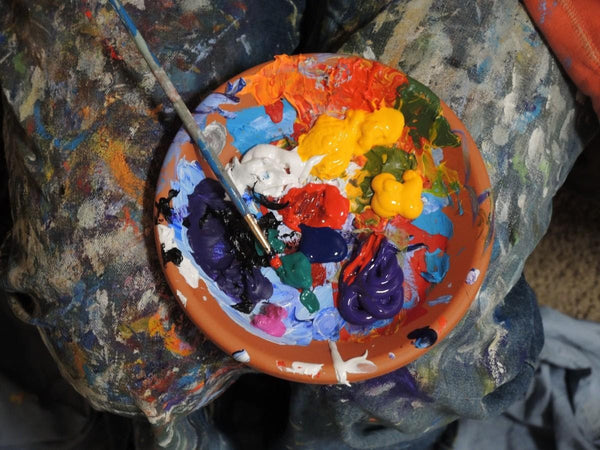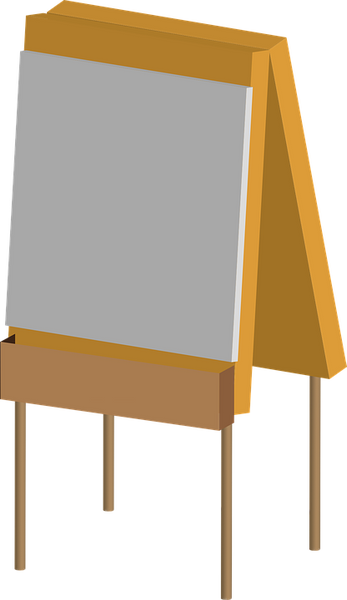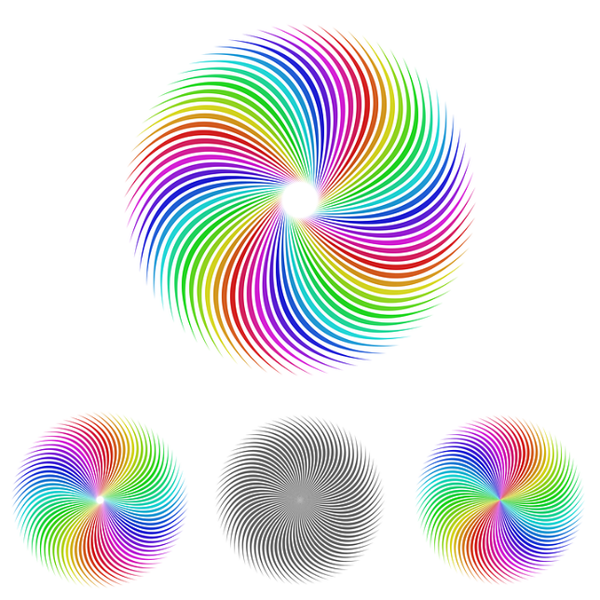The Beginner's Guide to Abstract Art and Displaying It 📰

Historically, artists have used walls, ceilings and paper as their canvas to create art. From powder to liquid paint, natural pigments to chemically manufactured dyes, abstract artists have been using all sorts of ways to put color on a canvas. The recent years have also seen the development of digital art with artists creating their pieces on their digital screen and printing it out onto a canvas.
Read on as we look at some common abstract art techniques, many of which are used in both conventional and digital art as well as the use of artwork in interior decorating.
The Beginner’s Introduction to Abstract Art
In this section, we’re going to take a look at what makes an abstract painting and the basic techniques involved:
What Are the Key Components of Abstract Art?
1. Composition
The composition of abstract painting is very diverse. Unlike realistic artwork, an abstract piece doesn’t have an obvious focal point and it up to the artist to decide what this focal point is, where it will be in the painting, how much space it will occupy, and so on. In some cases, there may not even be a focal point, and the entire artwork may be centered on a combination of shapes, lines,and color.
2. Color Scheme
While many abstract paintings look like a random combination of colors from a distance, this is not always the case. Abstract artists carefully select the color palette for their paintings. For instance, icons like Rothko would often use single, solid colors that from a distance almost had a childlike quality to them. In reality, even till today, Rothko’s work contains so much depth and technique that it has the ability to move its viewers to tears.
Every abstract artist has their own unique style. Many choose only to use primary solid colors, while others may work along a gradient. Wassily Kandinsky, one of the founders of abstract art was known for using a wide color scheme in his paintings, but they all came together to create a cohesive piece of art.
3. Depth
What distinguishes a true work of art from a drawing made by your 5-year-old? The depth and layering you add to the artwork. Again, every abstract artist has their own way of adding depth to their painting. For some, it is adding multiple layers of paint to add different textures. Some artists may use varying brush strokes to create a multi-layered and three-dimensional effect on their art.
Picasso, who was a part of the Cubist art movement, used a 2-dimensional plane to create 3-dimensional paintings based on the premise of showcasing the different aspects of an object on the same canvas.
In digital art, depth may be obtained by layering and overlapping shapes, lines, geometrical objects and colors to give a textured effect. With the right use of color and blank space, artists can trick the human mind into perceiving something that isn’t even actually there (the concept is similar to the Rorschach Inkblot test used by psychologists to help patients reveal their true emotions)!
What Are the Basic Abstract Art Techniques?

Different artists have become famous throughout history for their unique style of painting. Van Gogh had his swirls of paint. Monet used vertical and horizontal brushstrokes to create entire paintings. While both these artists created works that are referred to as semi-abstract, you get where we’re going with this.
If you’re new to the world of art, here are some basic techniques to help you find some direction. From here on, you can get as creative as you like. One of the great things about art, especially abstract artwork, is that there really is no right or wrong way of going about it.
1. Skip the Brush
Abstract art steps away from the concept of realism and like I said, you can be as creative as you like! Many artists use the drip technique and allow the paint to flow freely to create different paintings. Some artists may move the canvas around or manipulate the drips in other ways to get their desired effect. Others work stages and allows some drips of paint to dry off before adding others to create a multi-layered, multi-textured effect.
2. Keep Your Canvas Moving
If you’ve ever seen an abstract painting, especially one that relies on the concept of non-symmetry, you’ll find that there is no one direction being followed by the lines and shapes involved. You can achieve this effect by moving the canvas around and painting in different directions. This is also one of the many techniques that were (and are) used by artists following the cubist movement such as Picasso.
You can move your canvas around, flip it at different angles and more, even when you’re creating digital art.
3. Start Without a Plan
You don’t need an end vision in mind to create artwork. Just having your canvas in front of you, along with your colors is all you need to get started. Pick up your brush (or any other tool you’re using) and start adding color to the canvas, letting it flow in the direction that appeals to you. If you’re creating digital art, the same concept applies.
4. Create a Connection Between Sound and Color
Remember when we talked about adding depth to your art? This is what I was referring to. Kandinsky experienced a condition known as synesthesia, where he had the ability to hear colors. By creating a connection between sound and color, you can create unique artworks that can capture your current thoughts and emotions.
5. Start with a Reference Point
This is the polar opposite of the technique where you start painting without a vision or an end result in mind. There is a commonly accepted belief that all art is abstract, which means that while realists try and capture what they see as it is, abstractionists try to project their personal views and thoughts into what they see. You can use actual objects, your current view or even a photograph as a starting point.
For instance, Van Gogh’s infamous starry night is a depiction of his view from the window of the asylum he spent time in during the late 1800s.
6. Use Different Shades to Express Yourself
Similar to the way we use sunshine to show joy and dark rain clouds to show sadness or anger, you can use different color schemes to express your emotions. Much of Rothko’s work after the Second World War used colors with bleak undertones to project the grief and anxiety he felt at the time.
7. Use Different Materials
You don’t have to use paint to create abstract art. Other materials like charcoal or dried pigments can also be used. In fact, with digital art, there are so many different types of software now that you can emulate pretty much any real-life material onto your digital canvas.
Start Slow
If you’re new to abstract art, don’t get frustrated. Creating abstract art pieces that are truly special takes time, practice, and patience. Many abstract artists start out with semi-abstract paintings. Once they’re comfortable with the mediums they are using, they begin to experiment and let go of whatever is holding them back from expressing themselves on the canvas.
Also, just remember, if you mess up, you can just layer on some color and cover up your mistakes. Abstract art can be quite forgiving that way. In fact, you might even be able to turn your mistakes into a totally new concept for your artwork.
Digital Art

The first concept of digital art was during the 1800s when the first camera was invented and people became involved in photography. With the use of computers becoming more widespread, geometric digital designs were introduced. It was only a matter of time before digital technology evolved, and software was developed to provide onscreen paintbrushes, pens, markers, and more. Digital art has established itself as an artistic avenue that is here to stay with many artists creating their work digitally, printing it on canvases and putting it up, just like conventional art.
Abstract Digital Art
Abstract art takes a leap away from the concept of realism and combines different lines, shapes, colors and textures to portray an idea, thought, or emotion, sometimes subconsciously. A digital screen allows abstract artists to explore their creativity without any bounds. With a variety of painting and art applications to choose from, artists can use a variety of tools on a completely blank canvas to create unique pieces of art. This includes having the option to cut out snippets, creating collages, inserting shapes, manipulating lines into different directions and shapes, creating 3-dimensional visuals, and more.
The Controversy Surrounding Abstract Art
Those who hold a Utopian world view believe that in a world of chaos and a range of different issues, abstract art is considered to be somewhat meaningless. Their ideology is that art should follow the realist school of thought and have representational value to depict life as it is including different societies, people, and more.
Abstract art presents a winning argument against this based on the premise that this type of artwork is always open to different interpretations. If the artwork itself is boundless, then the people who are viewing it by default, have the ability to perceive it in their own way. By creating an image on a canvas that is full of colors, lines and shapes, yet shows something unique every time, the world in general, and societies specifically can interpret art differently.
It must also be noted that many well-known abstract artists surfaced during the aftermath of the Second World War and during the Great Depression and their work is an inspiration for artists across the globe even now (and most likely in the years to come). Rothko depicted much of the gloom and uncertainty of the times of the Second World War in his art collections.
The Role of Abstract Art in the Modern World
Abstract art has made its place in the contemporary world, including in the modern interior design. Abstract artwork, both conventional and digital, is displayed in homes and in many rooms as the focal point. In fact, rooms may follow a monochrome color scheme with a colorful abstract art acting as the contrasting centerpiece.
Digital art is also gaining more and more popularity with time. Artists can start creating on their phones, tablets, and any other mobile screen, no matter how big or small it is. Once they see something that inspires them or when they feel like creating art, they can whip out their digital screen and get started.
Abstract Art as a Timeless Art Form
Abstract art is subjective both to its maker and its viewer. While some abstract artists may create surface pieces designed just for their aesthetic value, others may use it to show political discord, economic struggles, world suffering, and any other issue that is important to them.
Once an artist puts their artwork up for display, the ball is in the viewer’s court. It is up to people to decide how they view a piece of art. They may project their own thoughts, emotions, and worldviews onto it. Moreover, the artwork may appear to them differently every time they see it based on:
- Any new information they may have received that may affect their perception,
- Their mood, etc.
Hanging up artwork has also been identified for its therapeutic value. There is a belief that viewing art can help soothe the mind, reduce anxiety, and even encourage patients to heal faster.
Create your own unique abstract artwork and discover new art techniques inspired by your favorite abstract artists.












